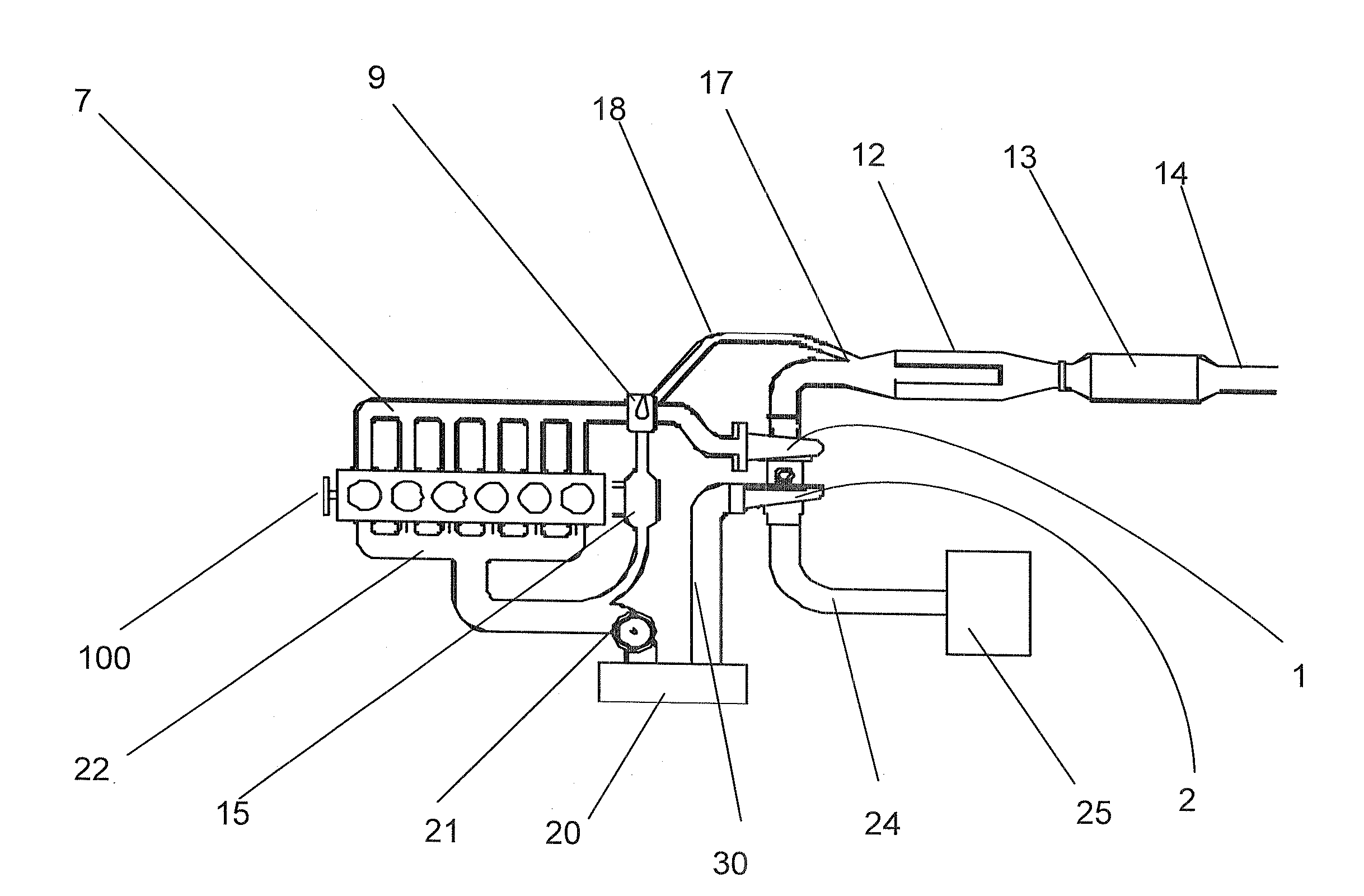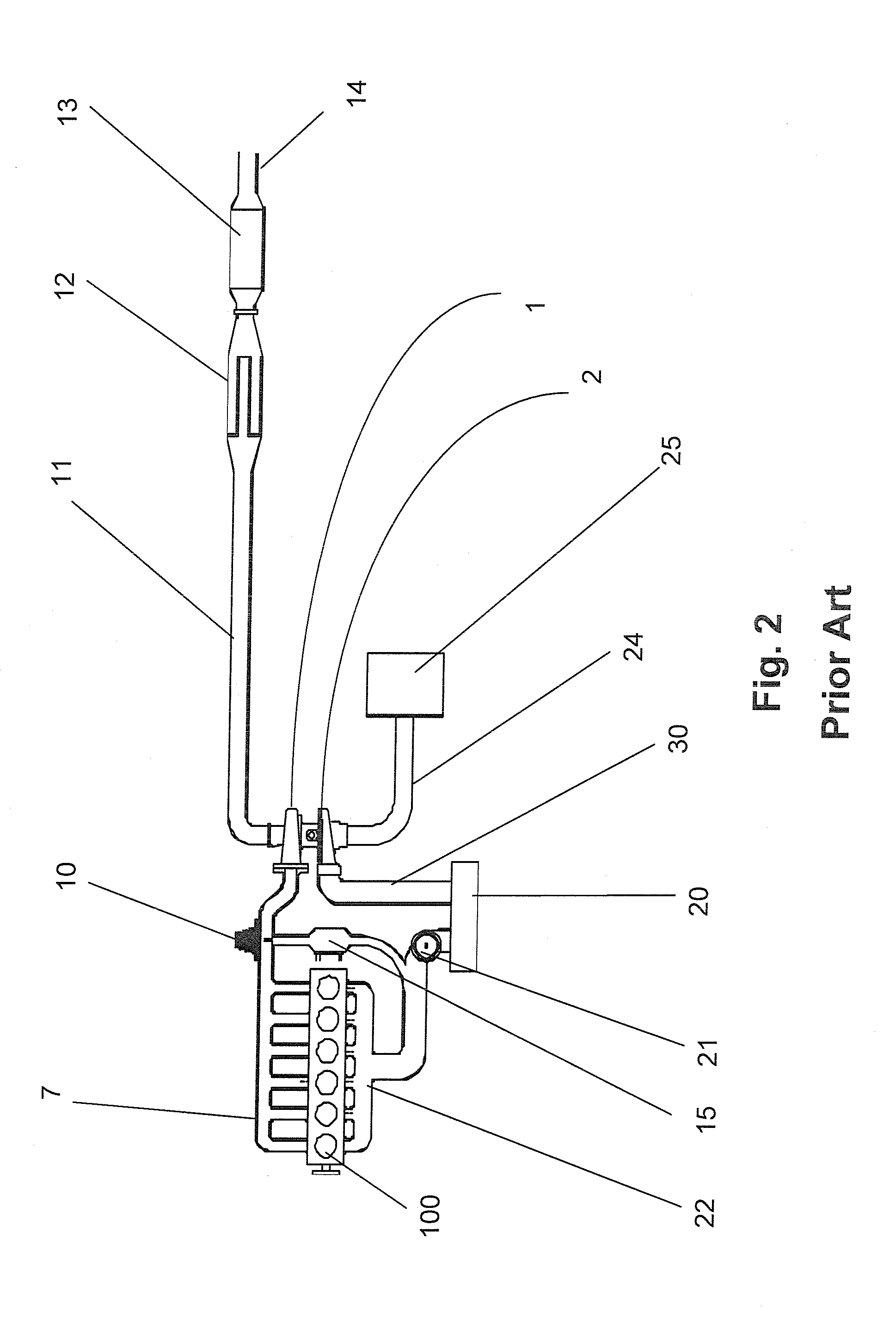Method for improving the light-off or regeneration behavior of an aftertreatment device in a vehicle system
a technology of aftertreatment device and vehicle engine, which is applied in the direction of engine components, machines/engines, mechanical apparatus, etc., can solve the problem of dpf reaching critical temperature quickly and dpf dragging, and achieve the effect of reducing the time for dp
- Summary
- Abstract
- Description
- Claims
- Application Information
AI Technical Summary
Benefits of technology
Problems solved by technology
Method used
Image
Examples
Embodiment Construction
[0077]Thermodynamically, a turbine housing functions like a massive heat sink. A cast iron turbine housing, when cooler than the exhaust temperature, will strip thermal energy from exhaust gas. Since the thermal inertia of one turbocharger is significant, it must be accepted that the thermal inertia of multiple turbochargers is proportionately significantly increased. Similarly, since VTG turbochargers contain many parts and have higher mass, the thermal inertia properties are proportionately significantly increased. In the case of multiple stage turbochargers the thermal inertia increases by the multiple of turbocharger count, plus the volume, and nature of the material connecting the multiple turbochargers.
[0078]In order to minimize the time required for regeneration of the DPF it is critical that the maximum use is made of thermal energy from the engine, found in the exhaust gas stream. To facilitate the desire for maximum thermal energy reaching the DPF at the time desired for r...
PUM
 Login to View More
Login to View More Abstract
Description
Claims
Application Information
 Login to View More
Login to View More - R&D
- Intellectual Property
- Life Sciences
- Materials
- Tech Scout
- Unparalleled Data Quality
- Higher Quality Content
- 60% Fewer Hallucinations
Browse by: Latest US Patents, China's latest patents, Technical Efficacy Thesaurus, Application Domain, Technology Topic, Popular Technical Reports.
© 2025 PatSnap. All rights reserved.Legal|Privacy policy|Modern Slavery Act Transparency Statement|Sitemap|About US| Contact US: help@patsnap.com



